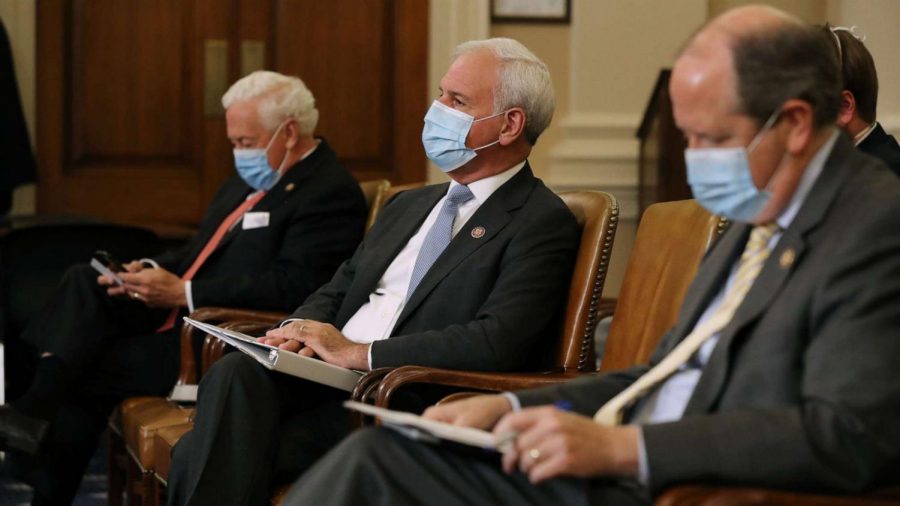House Rules To Allow Proxy Voting During Coronavirus Pandemic
May 18, 2020
As COVID-19 continues to spread, the Democratic-led House approved rule changes to allow proxy voting and remote hearings for the first time in history. This change is lauded by Democrats as a pragmatic change in the face of an unprecedented pandemic, but is also warned to change the nature of Congress and set a dangerous precedent by Republicans.
Lawmakers debated for weeks, attempting to reach a bipartisan agreement, but ultimately failed, adopting the policy along party lines with a vote of 217-189. Effective immediately, House Speaker Nancy Pelosi (D-Calif.) is able to initiate remote operations for 45 days, use videoconferencing for official committee hearings, and allow members in the House to cast up to ten votes on behalf of colleagues who have authorized those votes by letter.
Democrats argue that remote operations are necessary to fulfill their duties to the Constitution and country to respond to the crisis. Due to the health emergency, travel and in-person operations have become tricky, with between 25 and 35 members already absent in the House.
Meanwhile, Republicans say that in-person meetings are the essence of the legislative process. “The temporary changes that we make today become the precedent that we follow tomorrow,” said Rep. Tom Cole (R., Okla.). The new process “will fundamentally change the way the House operates and will remove the collegial environment we enjoy when we meet in person, get to know one another.” Republicans also sought the ability to block remote proceedings after the 45 day period.
House Democrats remain adamant that this change will only be temporary, with House Majority Leader Steny H. Hoyer (D-Md.) saying, “There is no dangerous precedent, only a common-sense solution to an unprecedented crisis that demands our ingenuity and adaptability as an institution.”
Rep. Cole hoped that the House could take “appropriate precautions and go back to work. That’s what the executive branch is doing. That’s what the United States Senate is doing. That’s what millions of Americans do each and every day. We should be no different. The House should do the same.”
With proxy voting, about a half-dozen House Democrats polled said they would continue to vote in person if they could.
Rep. Brenda Lawrence (D-Mich.) said, “It’s not like, ‘I’m having a bad day and I don’t want to go to Washington.’”
Meanwhile, Rep. Veronica Escobar (D-Tex.) plans to be selective about which trips to take and which votes to attend. “It just depends situation to situation. I am cognizant of the fact that this is a hot spot,” she said. “I have to think about those things. It’s more complex than saying, ‘Oh, I’ll be here every vote.’ . . . Really, it’s putting other people at risk.”
With these changes, the House joins many other entities such as the Supreme Court, schools, localities, and the private sector in using video technology to replace day-to-day business. The 100-member Senate reconvened on May 4 and has used remote committee work for hearings, but senators must still be present for votes.
As this public health crisis becomes the new reality, Rep. Steve Cohen (D-Tenn.) remarks, “The best place you can find to get the coronavirus is indoors in an enclosed room with a lot of people and a lot of talk. That’s the definition of Congress.”
Photo Courtesy of ABCNEWS.COM

